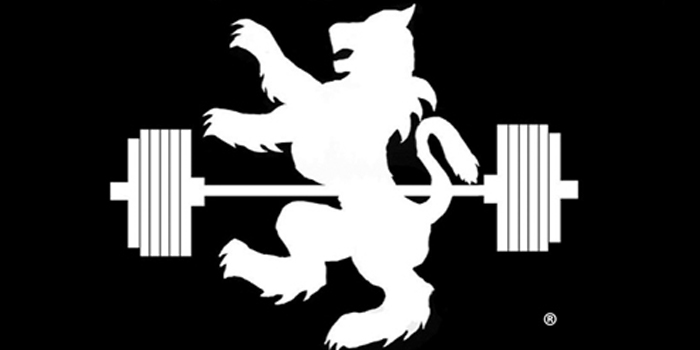
“Goals are good for setting a direction, but systems are best for making progress. A handful of problems arise when you spend too much time thinking about your goals and not enough time designing your systems.” — James Clear, Atomic Habits
I am a creature of habit.
I enjoy frequenting the same places, eating the same foods, re-watching my favorite shows, and, probably to my detriment, performing the same workouts. I was often chastised (albeit gently) for hammering the same music playlist over and over in the gym — a playlist that is replete with White Zombie and Rage Against the Machine and still reverberates in the garage gym in Texas.
RECENT: Chin-Ups at a Higher Bodyweight
I am a creature of habit.
I have watched the final episode of Breaking Bad no fewer than 20 times — “Felina,” one of the greatest series finales of all time. (How I miss Walter White, Jesse Pinkman, and crew.) Vince Gilligan’s recent Netflix release, El Camino, took the edge off my withdrawals. Still, it wasn’t quite the same — spoiler alert — aside from the Old West-style shootout, which was intense and well-crafted.
I don’t watch a lot of television — maybe a couple of shows a week (still too much). At times, I use the television as background noise — to somehow keep me company. Most recently, I have become hooked on the late Anthony Bourdain’s Parts Unknown. I find myself viewing the Montana episode repeatedly. I am fascinated with Bourdain — so seemingly confident on the outside; the “why” behind his suicide in 2018 remains a mystery.
Given my predilection, not surprisingly, an article in the Smarter Living section of The New York Times, “The Unexpected Joy of Repeat Experiences,” recently drew my attention. The article suggests that initial beliefs were that we are evolutionarily disposed to finding novel experiences more exciting than repeat experiences. Recent research indicates that the earlier studies may have misconstrued hedonic adaptation (when an identical stimulus provides less pleasure, the more it is consumed). Recent research suggests people underestimate how positively they react to repeat experiences. As this article’s introduction suggests, many of us happily listen to our favorite song on repeat or replay favorite movies or televisions shows.1
The research referenced in The New York Times suggested participants who repeated experiences found the second time around just as enjoyable as the first. There is a joy in repetition partly because every human mind tends to wander. Consequently, we miss a substantial part of every initial experience, leaving new aspects to uncover and enjoy during the repeat.1

The article made me think about some of the repeat experiences I have enjoyed in the gym (aside from the above-mentioned music playlist).
To that end (and with an eye toward self-deprecation), below are two of my arguably less productive gym habits and one of the subtle tweaks I employed to bolster my training effect.
The Definition of Insanity — Volume
I attended elitefts' Learn to Train 3 Seminar (LTT3) back in 2011 (I am not sure where the time has gone — such a long time ago, but in some ways, it feels like yesterday).
The month before the seminar, I began to realize much of my training followed a specific pattern. The seminar’s content catalyzed some of the changes I needed to employ to break through my training plateaus.
RELATED: Redesign Your Weekly Program
I had always been good at warming up, so that aspect of my training was never an issue, but most of my work sets followed this predictable pattern — let's call it the "Pattern of 25s and 45s."
I suspect this example will hit close to home for some of you.
When performing the floor press, after an extensive warm-up, this was my pattern:
- 5 reps with 225 — add 25s
- 5 reps with 275 — remove the 25s and add 45s
- 3 reps with 315 — add 25s
- 3 reps with 365 — remove the 25s and add 45s
- 3 reps with 405
- Shoot for a heavy single
Before the seminar, I was stuck in this rut/pattern for years. Sure, every few floor press sessions, I made an honest effort to hit a new 1RM, but I wasn't doing the 3RM work and adding the additional volume required to build my 1RM.
Once I realized my error, I added another 10 pounds to all the sets, starting with what was the "275 set," so my revised sets were 285, 325, 375, etc. This subtle change improved my training effect.
The first week I changed the pattern, the result was a new 3RM of 415; a couple of weeks later, I switched from two-board presses back to the floor press, remembered to break the old pattern, and hit a new 3RM in short order.
I am a creature of habit.
A Simple Change — Repetition Cadence
For the bulk of my training career, I trained as a powerlifter, albeit with too much focus on the bench press and not enough on the squat and deadlift. I performed most of my repetitions with a fast but controlled eccentric (lowering of the weight) and a concentric push (raising the weight) as explosively as possible.
I had carried that repetition cadence into my late 40s, but now my body isn’t as adept at recovering from the faster repetitions, and I have found that I am more susceptible to injury and irritating muscle tweaks/pulls.
Now, I mostly move weight to keep my sanity and with the intent of trying to preserve the little strength I have left for as long as I can. I have been forced to adjust my training habits, and this is the first year that I have been forced to take a long hard look at the cadence (also known as tempo) of my repetitions to train productively.
READ MORE: What's Changed at Age 45
Most recently, I have employed a slower tempo with my dips and dumbbell bench work. Instead of always pushing the weights as high as possible, I sometimes employ a slower eccentric tempo (e.g., three seconds) and a slower controlled concentric (e.g., two seconds) to increase the time under tension and decrease the wear on my joints and connective tissue.
I am a creature of habit.
Summary
In his book, Atomic Habits, James Clear refers to habits as the compound interest of self-improvement, but notes that habits can be a double-edged sword — they can also work against you. Often, small changes, in both training and life, appear to make little difference initially, but the results compound over time.2
Achieving a goal is only a momentary change, but the most powerful outcomes of any compounding process, such as an alteration of habit, accumulate over time. The key is maintaining consistency and having the patience to reap the ultimate rewards.2
Don’t (always) be a creature of habit.
References
- Fessler, L. (2019, November 8). “The Unexpected Joy of Repeat Experiences.” The New York Times. Retrieved from https://www.nytimes.com/2019/11/07/smarter-living/the-unexpected-joy-of-repeat-experiences.html.
- Clear, James. Atomic Habits. Penguin Publishing Group. Kindle Edition.










